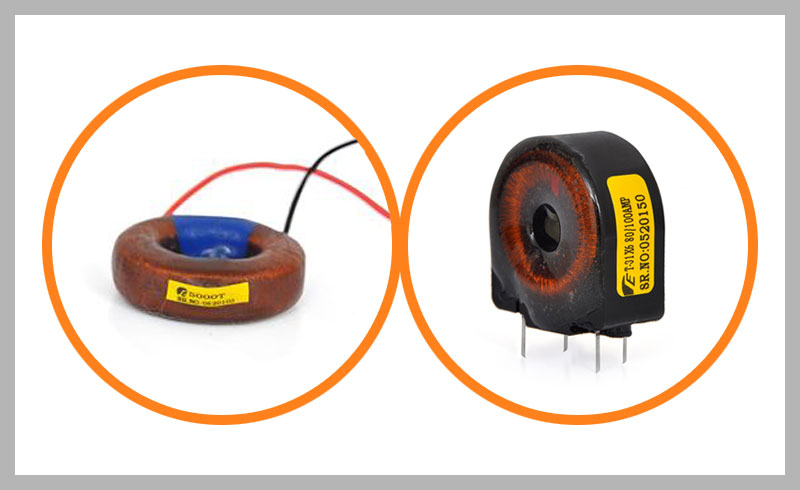No Product Added

By : Shah Electronics

In the intricate web of electrical systems, precision is paramount. One indispensable component ensuring this accuracy is the Current Transformer (CT). Let us understand the role of current transformers in the Electrical Industry in depth:
A Current Transformer (CT) is a specialized device designed to measure electric current in a way that makes it safer and more manageable for monitoring and protective purposes. Think of it as a translator for the language of electric current, converting high currents into a safer, standardized form that can be easily understood and utilized.
Imagine you have a flowing river, representing the current in an electrical system. Now, measuring the full force of the river directly might be challenging and even dangerous. Here, the Current Transformer acts as a translator by diverting a small, manageable stream from the main river. This smaller stream is easier to measure, monitor, and work with, providing a safer and more practical way to understand the overall flow of the river.
Let us unravel the multifaceted role of current transformers and their indispensable contribution to the electrical landscape.
Power systems rely on CTs for critical functions such as metering, protection, and control.
Inaccurate measurements can lead to inefficiencies, equipment damage, and even catastrophic failures.
At Its core, the primary role of a current transformer is to measure electric current with unparalleled accuracy.
CTs transform high currents into standardized, manageable values, allowing for safe and precise monitoring.
CTs act as guardians, ensuring that current levels stay within safe limits.
Overcurrent protection is a key aspect, preventing damage to equipment and guaranteeing the reliability of the entire system.
CTs find application across various sectors, from residential power distribution to industrial and utility settings.
They are integral to power meters, relay circuits, and protective devices, showcasing their versatility.
In a world where energy efficiency is paramount, CTs contribute by precisely measuring power consumption.
Accurate data facilitates informed decisions on optimizing energy usage and reducing waste.
Utility companies rely on CTs for precise measurement of electricity consumption, ensuring fair and accurate billing.
CTs contribute to the transparent and reliable functioning of the billing infrastructure.
CTs play a crucial role in identifying abnormal currents, acting as early warning systems for faults.
This capability is vital for preventing accidents and minimizing downtime in critical applications.
As technology evolves, CTs are adapting to support digital advancements, such as IoT integration and smart grid systems.
This adaptability positions CTs as key components in the integration of modern technologies in the electrical industry.
Accurate current measurement is the backbone of a well-functioning electrical system. Whether in transmission lines, distribution networks, or industrial applications, CTs ensure that the current flowing through is precisely measured. This accuracy is paramount for optimal performance, safety, and efficiency.
Current Transformers (CTs) come in diverse types, each designed to cater to specific applications in the electrical industry. Understanding these variations is crucial for selecting the right CT for a given purpose. Let's delve into the different types of current transformers and their unique characteristics.
These CTs are characterized by a solid, elongated bar structure.
Ideal for high-voltage applications, such as transmission lines.
Known for their robust construction and ability to handle substantial electrical loads.
Feature a winding of conductive wire around a magnetic core.
Suited for medium-voltage systems, offering reliable performance.
Commonly used in distribution networks and industrial settings.
Distinguished by their donut or toroid-shaped core.
Compact, lightweight, and versatile, making them suitable for various applications.
Often utilized in power meters and electronic devices due to their space-efficient design.
Have a window or opening through which the primary conductor passes.
Facilitates easy installation without disconnecting the circuit.
Widely used in retrofit applications where the primary conductor cannot be disconnected.
Designed to measure the total current of multiple conductors.
Useful in applications where the sum of currents needs to be determined.
Commonly employed in systems with parallel conductors.
Specialized for use in protective relay circuits.
Designed to accurately measure high currents during fault conditions.
Critical for initiating protective actions to prevent damage to electrical equipment.
Provide flexibility by offering multiple ratio options.
Allow for a single CT to be used in various applications with different current levels.
Cost-effective and efficient for systems with varying current requirements.
The applications of CTs are diverse and integral to various facets of the electrical industry. Some key applications include:
CTs ensure accurate measurement of power consumption.
Crucial for preventing damage to equipment during electrical faults.
Ensuring precise measurement for billing purposes.
Detecting abnormal current flow to prevent accidents.
As technology continues to evolve, so does the landscape of current transformers. Emerging trends include:
Integrating digital technologies for enhanced accuracy and communication.
Enabling remote monitoring and control for improved efficiency.
Developing smaller, more compact CTs for space-saving solutions.
Shah Electronics stands at the forefront of current transformer manufacturing in India. With a commitment to quality and innovation, we specialize in producing CTs that meet the diverse needs of the electrical industry. CTs are integral to the seamless functioning of power systems. As technology continues to advance, so will the capabilities of current transformers. Contact us today!
© 2025. Shah Electronics. All Rights Reserved. Terms of Use Privacy Policy Cookie Policy
Terms of Use
Privacy Policy
Cookie Policy
© 2025. Shah Electronics. All Rights Reserved.
Powered by WEBMANTRA